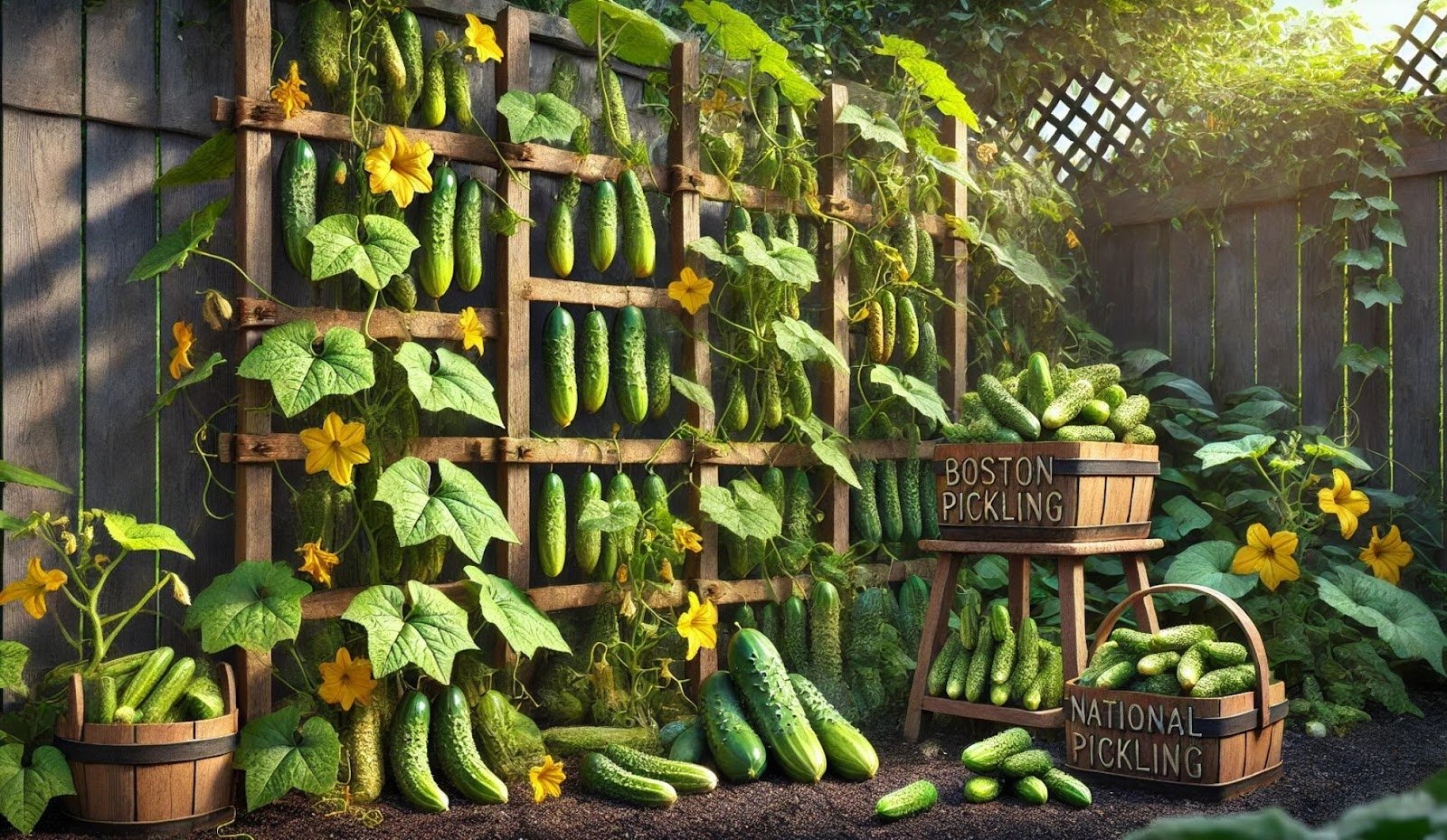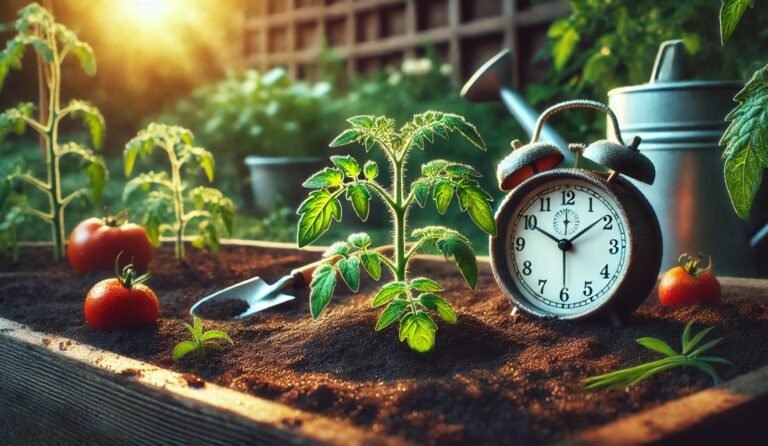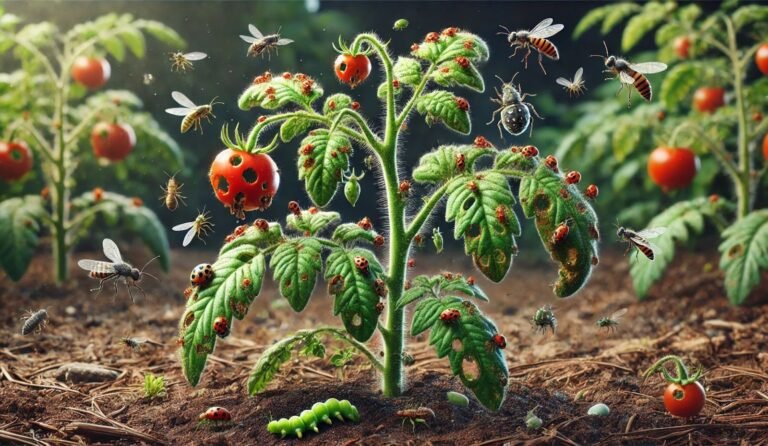Pickling Cucumber Plants: Easy Care Tips for Healthy Growth
Pickling cucumber plants are a game-changer if you love homemade pickles or fresh, crunchy snacks. They’re easy to grow, thrive in backyards or containers, and produce a bountiful harvest in no time. But getting those perfect, firm cucumbers isn’t just about tossing seeds in the dirt and hoping for the best. You need the right variety, proper care, and a few smart gardening tricks. Want to know how to grow your own pickling cucumbers effortlessly? Let’s dive in!
What are Pickling Cucumber Plants?
Pickling cucumber plants are a type of cucumber specifically grown for making pickles. They’re typically shorter, thicker, and bumpier than slicing cucumbers, with a thin skin that easily absorbs brine and flavors.
Their crisp texture holds up well during the pickling process, keeping them crunchy even after being preserved. Popular varieties include Kirby, Boston Pickling, and National Pickling. While they’re perfect for pickling, they can also be eaten fresh for a slightly tart, refreshing bite.
Choosing the Right Pickling Cucumber Plants Variety
Not all cucumbers are created equal, especially when it comes to pickling. The variety you choose can make a big difference in flavor, texture, and even how easy they are to grow. Some varieties are best suited for backyard gardens, while others thrive in containers.
If you’re looking for a reliable, classic option, Boston Pickling cucumbers are a favorite among home gardeners. They produce crisp cucumbers that are ideal for making traditional pickles. Another great option is the National Pickling cucumber, which is known for its high yield and disease resistance.
If you want something with a long harvesting period, Calypso cucumbers are an excellent choice. For those who have limited space, Parisian Gherkin cucumbers grow well in small gardens or even indoors. And if you’re after that perfect crunch, the Homemade Pickles variety is a fantastic pick.
If you have space for vines to sprawl, go for a vining variety that can grow up a trellis. But if you’re working with a patio or indoor setup, bush varieties are a better fit since they take up less room and don’t require much support.
When and Where to Plant Pickling Cucumbers
Timing is everything when it comes to planting cucumbers. Since they thrive in warm weather, you’ll want to plant them once the danger of frost has passed. Ideally, the soil temperature should be at least 60°F (15°C) before you put your seeds or seedlings in the ground. In most regions, this means planting them in late spring or early summer.
If you’re growing cucumbers outdoors, choose a sunny spot where they’ll get at least 6 to 8 hours of sunlight daily. Cucumbers are sun lovers and need warmth to grow efficiently. If you’re growing them indoors or on a balcony, make sure they get adequate light, either from a sunny window or with the help of a grow light.
For container gardening, choose pots that are at least 12 inches deep and wide, giving the roots enough space to spread. Good drainage is crucial, so make sure your pots have drainage holes. If you’re planting directly in the garden, well-draining soil is a must—cucumbers hate sitting in soggy soil!
Preparing the Soil for Pickling Cucumbers
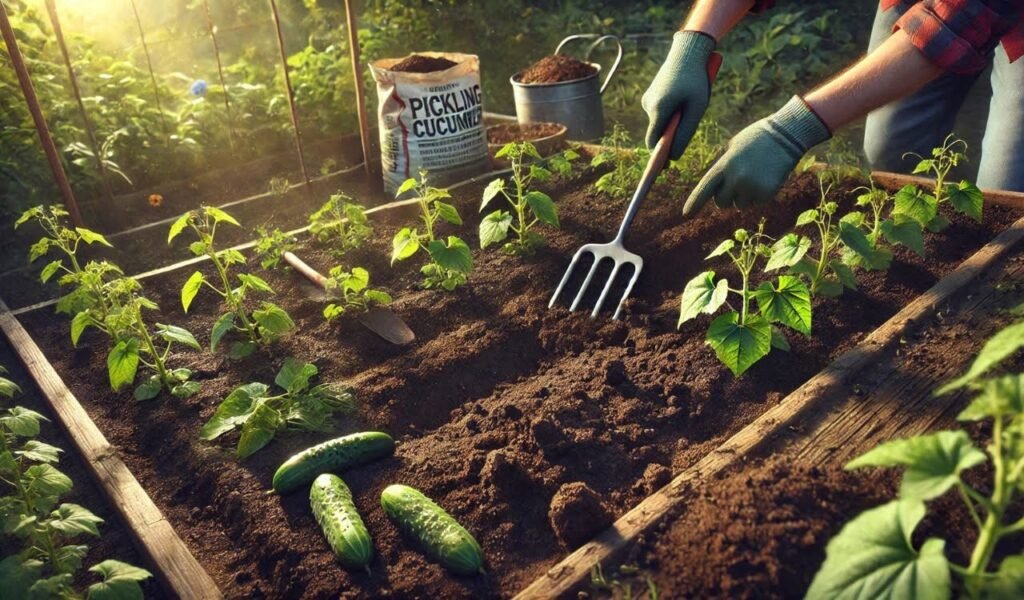
Cucumbers are pretty forgiving, but they do best in loose, well-draining soil with plenty of organic matter. The ideal soil pH for cucumbers is between 6.0 and 6.8. If your soil is too acidic, adding a little lime can help balance things out. To give your plants a great start, loosen up the soil with a garden fork and mix in compost or well-rotted manure to boost its nutrient content.
If your garden has heavy clay soil, adding sand or perlite will improve drainage, preventing water from pooling around the roots. For container gardening, use high-quality potting soil mixed with compost to ensure your cucumbers get all the nutrients they need. You can also add a slow-release fertilizer to provide steady nourishment throughout the growing season.
How to Plant Pickling Cucumbers
You can grow pickling cucumbers either by directly planting seeds in the soil or by starting seedlings indoors and transplanting them later. If you’re planting outdoors, sow seeds about 1 inch deep and 6 inches apart in rows. Once the seedlings sprout, thin them out so they’re spaced 8 to 12 inches apart.
If you’re planting them in raised beds or containers, just make sure they have enough room to spread out. For indoor gardeners, start seeds in biodegradable pots 3-4 weeks before the last frost date. Once the soil outside has warmed up, transplant them into your garden or a larger container.
Just be sure to harden them off by placing them outside for a few hours each day before planting them permanently. A great tip to boost growth is companion planting. Cucumbers grow well alongside beans, radishes, marigolds, and dill, but avoid planting them near potatoes or aromatic herbs like sage.
Caring for Pickling Cucumber Plants
Caring for pickling cucumbers is easy once you understand their basic needs.
Watering
Cucumbers need consistent moisture but hate being overwatered. Aim for at least an inch of water per week and water deeply rather than frequently. If you’re growing cucumbers in containers, they may need more frequent watering, especially in hot weather.
Fertilizing
Since cucumbers are heavy feeders, a balanced fertilizer (like 10-10-10) will help keep them thriving. You can also use organic fertilizers like compost tea or fish emulsion. Avoid excessive nitrogen, as it will lead to leafy growth instead of fruit production.
Supporting the Vines
If you’re growing vining varieties, use trellises or stakes to support them. This helps prevent disease, improves air circulation, and makes harvesting much easier.
Dealing with Pests and Diseases
Cucumbers can attract pests like cucumber beetles and aphids. Cucumber beetles chew on leaves and spread bacterial wilt, while aphids suck the sap from plants. You can spray them with soapy water, use neem oil, or introduce ladybugs to control infestations naturally.
A common disease that affects cucumbers is powdery mildew, which appears as white spots on leaves. To prevent it, make sure your plants are spaced properly and avoid watering them from above. If you notice signs of disease, removing affected leaves and using a fungicidal spray can help.
When and How to Harvest Pickling Cucumbers
Cucumbers grow fast, and regular harvesting keeps them coming. Most pickling varieties are ready in 50-60 days and should be picked when they’re 3 to 5 inches long. If you wait too long, they’ll become tough and bitter.
Use sharp scissors or pruners to harvest instead of pulling, which can damage the vines. Picking cucumbers every 1-2 days encourages plants to keep producing.
Storing and Using Pickling Cucumbers
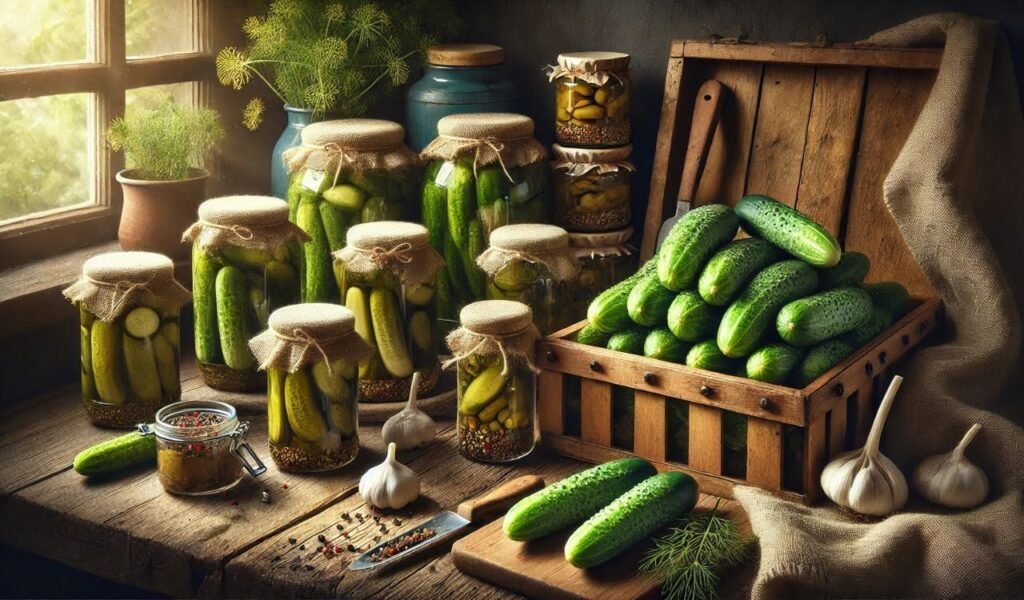
Fresh cucumbers can be stored in the refrigerator for up to 10 days, but if you want to enjoy them longer, pickling is the way to go. You can make dill pickles, sweet bread-and-butter pickles, or fermented pickles for a probiotic-rich snack.
Making pickles is easy—all you need is vinegar, salt, and spices. Whether you prefer crisp, tangy dill pickles or sweet and crunchy bread-and-butter pickles, homegrown cucumbers make the best pickles.
FAQ
What are pickling cucumber plants?
Pickling cucumber plants are varieties bred specifically for making pickles. They produce short, bumpy cucumbers that stay crisp when pickled.
How long do pickling cucumbers take to grow?
They typically take 50-60 days from planting to harvest, depending on the variety and growing conditions.
Can I grow pickling cucumbers indoors?
Yes, they can be grown indoors with enough light and warmth. Choose compact or bush varieties for best results.
How often should I water pickling cucumber plants?
Water them deeply once a week, providing about 1 inch of water. In hot weather or containers, water more frequently.
Do pickling cucumbers need a trellis?
Vining varieties benefit from a trellis for support, better air circulation, and easier harvesting. Bush varieties usually don’t need one.
How do I prevent cucumber beetles?
Use row covers, plant resistant varieties, and apply neem oil as needed. Encouraging natural predators like ladybugs also helps.
When should I harvest pickling cucumbers?
Harvest when they are 3-5 inches long and firm. Regular picking encourages more production.
Can I eat pickling cucumbers fresh?
Yes, they are delicious raw and add a crisp texture to salads and sandwiches.
Final Thoughts
Growing pickling cucumber plants is a fun and rewarding experience. With a little care, you’ll be rewarded with fresh, homegrown cucumbers all season long. Whether you’re planting them in a backyard or a small container on your patio, the process is simple and enjoyable. Ready to start your own cucumber-growing adventure? Grab your seeds, get your soil ready, and happy gardening!

